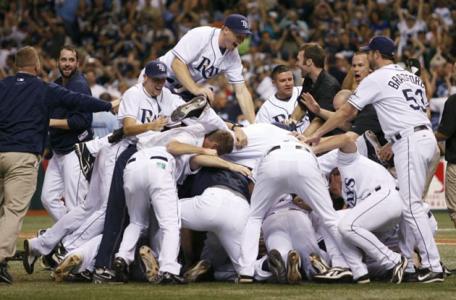 |
| Bourn and the Astros may bolt to the American League. |
I think having 15 teams in each league makes sense. It balances out the two leagues, meaning the AL West no longer has just four teams and the NL Central no longer has six. Yes, it would mean there would be an interleague game every day, but I don't think that hurts the NFL or NBA. Perhaps the schedule could be arranged so last place teams from the year before are the ones playing interleague games in late September.
One issue people keep talking about is having a "balanced schedule." I think the idea of the schedule being balanced is a bit of an illusion because the strength of a team lies largely on the starting pitcher. Say the Rangers, Athletics, and Angels all play the Mariners 18 times. However, do they all face Felix Hernandez the same number of times? The Mariners with King Felix and the Mariners without King Felix are two different animals. You'll never have a perfectly balanced schedule, so I say you have to be a little flexible there.
Another rumored change is the elimination of divisions. The part of me that fears change is a little uncomfortable with this, but a closer look helps me understand it. Teams like the Tampa Bay Rays and Baltimore Orioles would welcome this. A more balanced schedule in which the Rays and O's play the Yankees and Red Sox a little less and the Royals and Athletics a little more would be a welcome change. That would mean they only have to be top five in the entire American League instead of top two in their own division, which has proven to be quite a challenge over the last decade. So, while I like having divisions and rivalries within those divisions, I might be open to trying one big league for the sake of those teams.
 |
| A team that dominates in the regular season should be rewarded. |
Regarding the no divisions proposal, the biggest question I would have would be how they work out the schedule without leagues. Do you play every team in your own league six times? Eight? Ten? Part of me still wants to have divisions.
The one advantage to keeping divisions would be the schedule could balance out pretty easily:
- Play the other four teams in your division eighteen times (six three-game sets). That's 72 division games.
- You have three home and three road games against the other ten league teams. That's 60 more games.
- Now, on to interleague play. Two steps here. First, pair up the divisions geographically. AL East plays NL East, Central vs Central, etc. One three game series for each team. This happens every year because it pairs up rivals every season. (Home sites rotate each year. So, one year it's Cubs-White Sox at Wrigley. The next year, it's on the South Side.). So, that means a total of five three-game sets with your rival division. That's 15 games.
- Finally, part two of interleague: rotate with other divisions. One year, NL East also plays the AL Central. Next year, it's the AL West. And go back and forth. Again, one three-game set with each team. That's 15 games.
- 72 + 60 + 15 + 15 = 162 games.
Then at the end, you have three division champions and two wild cards in each league. I think you should reward the top overall seed. As I said earlier about the no division format, a team that establishes itself as the league's best over 162 games should be rewarded in the postseason.
 |
| I'm fine with wild card teams, but make their road tougher. |
That's my proposal. It's pretty close to balanced. It preserves rivalries, and it rewards regular season dominance.
It'll never happen.
No comments:
Post a Comment